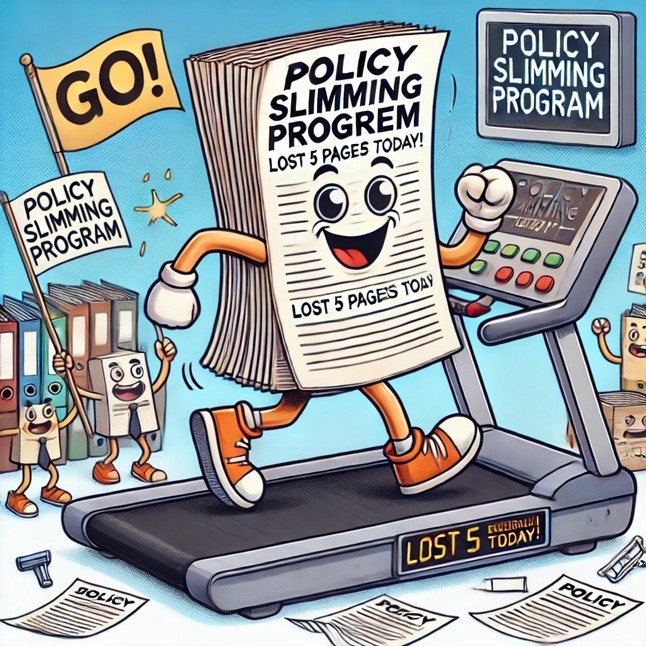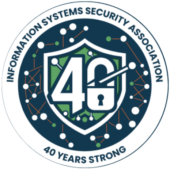The rapid proliferation of security and privacy policies within enterprises has led to significant inefficiencies, technical debt, and an undue compliance burden on employees and organizations. This paper argues for the introduction of a framework akin to the Paperwork Reduction Act (PRA)—adapted specifically for enterprise privacy and security policies. By applying the principles of the PRA, which aims to minimize the burden of paperwork on individuals, businesses, and government agencies, this “Policy Reduction Act” could establish a systematic process to streamline internal security policies, reduce unnecessary burdens, and foster clarity and compliance within enterprises.

The Paperwork Reduction Act: A Parody or an Enterprise Framework for Policy Burden Reduction?
The Paperwork Reduction Act of 1980, enacted in the United States, aims to reduce the amount of paperwork that government agencies impose on businesses, individuals, and other entities. Its goals include minimizing administrative burden, improving efficiency, and ensuring that any required reporting serves a clear and necessary purpose. The Act achieves this through:
- Systematic Review and Approval: Agencies must justify the necessity of forms and paperwork to the Office of Management and Budget (OMB).
- Reduction of Redundancy: Agencies must identify and eliminate duplicate or outdated requirements.
- Public Engagement: Feedback is solicited to ensure that reporting requirements are practical and necessary.
Adopting similar principles for enterprise privacy and security policies would provide a structured mechanism to address policy bloat and reduce the compliance burden on employees and organizations.
The Case for a “Policy Reduction Act” for Enterprises
1. The Policy Burden on Employees and Organizations
Just as the PRA addresses the administrative burden of enterprises face a parallel challenge: the overwhelming proliferation of internal privacy and security policies. Employees across roles—whether software engineers, compliance analysts, or legal professionals—must navigate a dense and often contradictory landscape of policies to understand their responsibilities. This complexity leads to:
- Reduced Productivity: Employees spend excessive time deciphering policies rather than executing meaningful work.
- Increased Costs: Redundant and outdated policies inflate compliance and operational expenses.
- Frustration and Non-Adherence: Complex policies discourage understanding and compliance, exposing organizations to risks.
2. The Need for Policy Justification
Similar to how government agencies must justify their paperwork requirements under the PRA, enterprise policies should require clear justification for their existence. Before introducing a new policy or standard, organizations should assess:
- Necessity: Is this policy required to meet a regulatory obligation or mitigate a specific risk?
- Redundancy: Does an existing policy already address the issue?
- Cost-Benefit Analysis: What are the operational and financial implications of implementing the policy?
Adopting a “Policy Reduction Act” Framework
The following sections outline how enterprises can model a “Policy Reduction Act” on the principles of the PRA:
1. Policy Review and Oversight Board
Just as the OMB oversees government paperwork, enterprises should establish a Policy Oversight Board responsible for:
- Reviewing all new and existing policies to ensure they meet a clear purpose.
- Mandating the retirement of redundant or outdated policies.
- Setting guidelines for policy creation, including length, language, and alignment with organizational goals.
2. Policy Lifecycle Governance
Policies should undergo systematic reviews at regular intervals (e.g., annually). The review process should include:
- Sunset Provisions: Policies must include an expiration date, after which they require formal review and renewal to remain in effect.
- Consolidation Efforts: Combine overlapping policies into a unified framework to reduce redundancy.
- Stakeholder Engagement: Solicit feedback from employees across roles to ensure policies are practical, understandable, and actionable.
3. Stakeholder-Centric Policy Design
Policies should be tailored to their intended audience, much like the PRA encourages simplification for end-users. Enterprises should:
- Use plain language to ensure policies are accessible to non-technical audiences.
- Create role-specific summaries that highlight key responsibilities for employees.
- Provide centralized access to policies through user-friendly platforms, enabling employees to quickly identify applicable policies based on their role.
4. Metrics for Policy Effectiveness
Enterprises must establish measurable objectives for policy performance, such as:
- Compliance rates across departments.
- Reduction in the number of policies over time.
- Employee feedback scores on policy clarity and usefulness.
Parallels Between the Paperwork Reduction Act and a “Policy Reduction Act”
Principle Paperwork Reduction Act Policy Reduction Act for Enterprises
| Goal | Reduce paperwork burden on individuals and organizations. | Reduce the policy burden on employees and enterprises. |
| Oversight | OMB reviews and approves paperwork requirements. | Policy Oversight Board reviews and approves new policies. |
| Public/Employee Engagement | Solicits feedback from businesses and individuals. | Solicits feedback from employees across departments. |
| Redundancy Elimination | Identifies and eliminates duplicate reporting requirements. | Consolidates overlapping or outdated policies. |
| Simplification | Encourages plain language and streamlined forms. | Promotes plain language and role-specific policy summaries. |
| Lifecycle Management | Periodic review of forms and paperwork requirements. | Promotes plain language and role-specific policy summaries. |
Benefits of a “Policy Reduction Act” for Enterprises
By implementing a framework modeled on the PRA, enterprises can achieve:
- Clarity and Accessibility: Simplified policies reduce confusion and enable employees to focus on their core responsibilities.
- Cost Savings: Fewer and more focused policies lower the administrative and operational costs of compliance.
- Enhanced Compliance: Clearer policies improve understanding and adherence across the organization.
- Streamlined Operations: A lean policy ecosystem reduces bottlenecks and fosters agility in responding to regulatory or business changes.

A Call to Action for Policy Stewardship
The Paperwork Reduction Act provides a framework for reducing administrative burdens, and its principles are highly applicable to the management of enterprise privacy and security policies. By adopting a “Policy Reduction Act,” organizations can streamline their governance frameworks, reduce technical debt, and foster a culture of clarity and efficiency. This shift not only benefits employees by making compliance more manageable but also strengthens the organization’s overall security posture by ensuring that policies are relevant, actionable, and aligned with strategic goals. The time has come for enterprises to take a deliberate, structured approach to policy stewardship—one that balances the need for robust security with the imperative to reduce unnecessary complexity.

Author: Aaron Rinehart
Aaron has spent his career solving complex challenging engineering problems
and transforming cyber security practices across a diverse set of industries: healthcare, insurance, government, aerospace, technology, higher education, and the military. He has been expanding the possibilities of chaos engineering in its application to other safety-critical portions of the IT domain, most notably in cybersecurity
